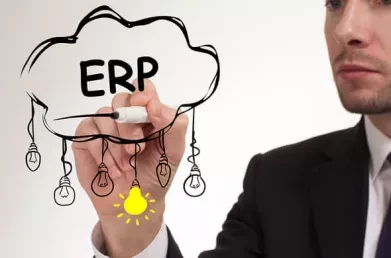Data Migration: Dealing with ERP Implementation Challenges
Many organisations include the delivery of more accurate management information as an objective for a new ERP. This can only be achieved if the new system is underpinned by good data.
The Data Migration stream of an ERP implementation is tasked with delivering quality data and is therefore critical to the success of a project. It can also be one of the more challenging areas for an ERP Project Manager to manage, so it’s worth taking time to understand the complexities involved and to consider ways of dealing with the challenges.
ERP Data Migration Challenges
Challenge 1 – Integrated Nature of ERP
It is the integrated nature of ERP, along with the requirement for a single source for data, that leads to the first Data Migration challenge, as it requires input and collaboration across several business areas. This work needs to be co-ordinated and managed carefully
Challenge 2 – Understanding Data Migration Activities
There is a lot more to Data Migration on an ERP project than extracting data from legacy systems and loading it to the new system. ERP Data Migration activities usually include:
- Collection
- Extraction
- Cleansing & Harmonisation
- Transformation
- Loading
- Testing
- Archiving & Retention
Each of these activities needs to be clearly understood and then carefully planned. If you would like more information on these, the Lumenia White Paper Data Migration in ERP Projects explains each activity in detail.
Challenge 3 – Business Involvement
Although technical involvement is vital, a lot of the Data Migration activities require input and effort from the business. This is not always recognised, and the appropriate resources are therefore not assigned, or the time required from the business owners is not adequately factored into the project plan.
Challenge 4 – Modifying Data
In many ERP projects, it is necessary to modify certain data (revised numbering systems; different analysis groupings and so on) as part of the migration process to the new system. Decisions on the nature of these modifications can usually only be made during the design stage of the project and the work required to collate and structure the data can only start after that. This often leads to delays and a build-up of activities for an already stretched project team during the testing stage of the project.
Challenge 5 – Historical Data
Expectations regarding the amount of transactional and historical data to be migrated can differ between the project and the business and, between the client and the vendor. If this is not clarified at an early stage it can lead to disagreements, delays and even budget overruns.

Addressing ERP Data Migration challenges
Recommendation 1 - Data Migration Strategy and Plan
As the saying goes, “if you fail to plan, you are planning to fail”. Good ERP Data Migration management starts with a clearly thought out strategy and plan. Taking time at project launch to define the data to be migrated and the depth and breadth for each data element is always advisable. The Data Migration strategy should also cover the technologies to be employed, the testing approaches and the makeup of the Data Migration team. The Data Migration plan should include the activities listed above, and these need to be scheduled in line with other implementation activities, recognising dependencies and ensuring enough time is allocated.
Recommendation 2 – Data Migration Team
That leads to the next recommendation – make sure the right Data Migration team is in place. The Data Migration Lead is a key role and, if possible, it should be filled by an experienced professional who understands the complex interdependencies both within the Data Migration stream and between Data Migration and other project streams. Getting the balance right between technical and business resources is crucial. Technical analysts will be required to perform programmatic data migration tasks and, ideally, they should be familiar with the legacy systems. The ERP functional/process leads will be involved at various stages, from the definition of data fields to be migrated to testing and validation. Business owners/stakeholders will need to contribute and sign off at various stages of the data migration process. All these team members need to clearly understand their roles, the input and effort required from them and, most importantly, that they need to work together to ensure high quality data is available on the new system.
Recommendation 3 – Vendor Involvement
It is vital that you involve your vendor in the Data Migration process and get their input. While the overall responsibility for Data Migration lies with the client, the vendor is usually tasked with helping the team to identify new data or new attributes for existing data and for loading data onto the new system. The vendor can, however, provide valuable advice on other data migration topics, including the amount of data that should be migrated and alternative solutions on how to access historical data if migrating it to the new system is difficult. It is ultimately up to the business to determine what they need, but these discussions should be held early in the process so that agreement is reached and there are no surprises later. It’s also important to make sure the vendor identifies new data or new data attributes as early as possible, but this is usually dependent on business decisions that arise during the design stage of the project. The Project Manager can assist by making sure the business stakeholders understand the urgency of these decisions and the impact if they are not made in a timely fashion.
Recommendation 4 – Data Cleansing
It’s never too early to start data cleansing. There is often an expectation that the new system will deliver improved data quality, which by implication means that existing data is poorly maintained. Data cleansing can start independently of the implementation project and getting it out of the way early spreads the load and allows the team to concentrate on activities that can’t start until post-design. If possible, it is advisable to cleanse the data directly on the legacy system – this will simplify the extract, transform and load process, making it more efficient and repeatable, a vital consideration at the cut-over to live stage of the project. Data harmonisation (the standardisation of data, often from different sources, into a single format), if required, can also be agreed and started before design.
For more information and recommendations, you can download the Lumenia White Paper Data Migration in ERP Projects.
This blog was written by Ursula Browne, Managing Partner at Lumenia. For further information please send an email to Ursula Browne.


